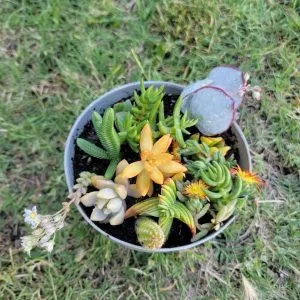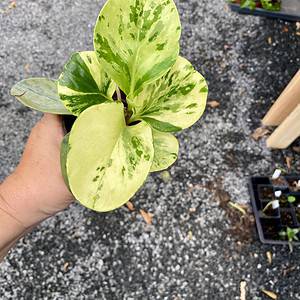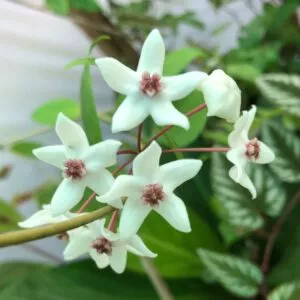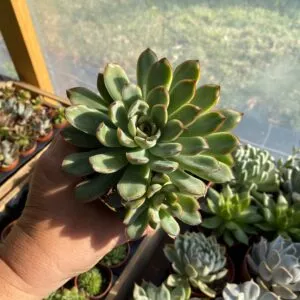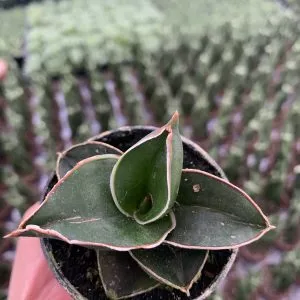No products in the cart.
Table of Contents
Did you know that this Black pussy plant is one of the most popular plants in the world? It has a fuzzy texture, which makes it feel like velvet when touched. The leaves are also dark green and glossy giving people an elegant feeling.
The size of each leaf is around one to two inches long, depending on the variety you have purchased.
People often call this plant “the living organism that looks invincible.” The black pussy plant was introduced to many parts of the world as an ornamental outdoor plant. But it has become invasive in some areas such as Hawaii, Florida, and Puerto Rico.
Nevertheless, I tell you that this will be perfect for decorating your home if you want to give it a modern look! Want to have this fascinating plant looking dazzling on your table? Read below to find out more!
Black Pussy Plant Care Basics

Before I give you tips on effectively taking care of this beauty, take a look at the plant’s overview.

Best Potting Mix
The soil of the black Pussy willow must be rich, well-drained, and have excellent aeration. It should also retain moisture but not become waterlogged or boggy. The Weeping willow will tolerate poorly-drained soil, but it performs best in well-drained soil that is constantly moist.
They are not particular about pH but will grow faster in soil with a pH of 4-8.
Important note: When planting, ensure that the crown is not covered by any soil. Do not plant black pussy plants in areas with standing water.
Lighting
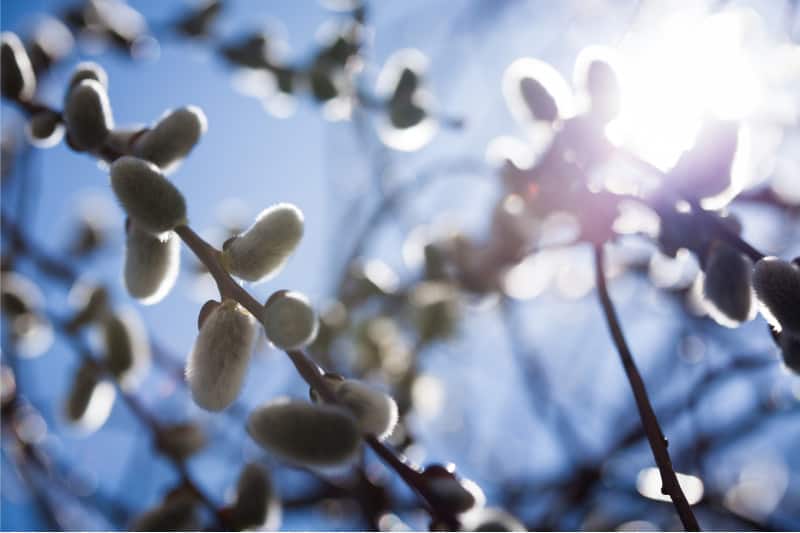
The Salix discolor does best in full sun to partial shade. Remember that too much or too little sunlight can cause the leaves to turn yellow. If you treat them as an indoor plant, make sure to face them near a south or north-facing window to receive ample light.
This will make them happy throughout the day.
In stock In stock In stock In stock
Free Shipping
$20.00
Sold By:
Blessed Family Farm
ASSORTED SUCCULENT ARRANGEMENT
Rated 4.82 out of 5 based on 22 customer ratings01
Sold By:
Blessed Family Farm
$18.00
Sold By:
Smoot's Farm
Peperomia Marble 4 Inch Pot Live Plant
Rated 4.89 out of 5 based on 27 customer ratings00
Sold By:
Smoot's Farm
$9.99
Sold By:
Cacti and Exotica
4″ Kalanchoe synsepala
Only 10 available and it’s in 1 people’s basket Rated 4.98 out of 5 based on 59 customer ratings00
Sold By:
Cacti and Exotica
$17.95
Sold By:
SunSoul Plants
$29.95Hoya Iris Marie plant potted in 4″ pot
Rated 4.87 out of 5 based on 98 customer ratings00
Sold By:
SunSoul Plants
Watering Needs
Just like other plants, the Black Pussy Plant needs a lot of moisture to thrive. They do well near streams in the wild and control soil erosion. Be sure to keep the soil moist at all times, but don’t overwater, as this can cause root rot.
Remember that there is a massive difference between wet soil and moist soil!
Important note: In moist, rich soil, about an inch of rain/irrigation per week is usually sufficient, but in soil that doesn’t retain water well, your Pussy willow may need more frequent watering. Remember that the goal is to keep the soil damp at all times!
Temperature & Humidity
The pussy willows grow best in temperate conditions with cold winters, typical of the northern United States and Canada (zones four and five). These trees grow slower under warmer climates (zones 6 to 8). If the temperature falls below or rises above this range, the plant may experience problems with growth or flowering.

When it comes to humidity, the Pussy willows readily tolerate high humidity. You can increase the moisture level by adding a humidifier or a pebble tray.
Fertilizer
The Black pussy willow does not require a lot of fertilizer. You can just add compost and your plant will be happy. However, if your soil is deficient, you should add more organic matter or fertilizer in the fall.
Before administering fertilizer, wait a full year and then apply it at the outside borders of the tree’s canopy, making sure the fertilizer does not come into contact with the plant itself.
Important note: After the plant has grown for more than a year, you can fertilize it once in the fall using a balanced fertilizer. Spread 1/2 pound of fertilizer 18 inches beyond the drip line of the branches for every 1/2 inch of base-trunk diameter. Allow no fertilizer to come into contact with the trunk of your pussy willows.
In stock In stock In stock In stock
$10.00
Sold By:
Smoot's Farm
Succulent Echeveria Mystery Green with Red Edge
Rated 4.89 out of 5 based on 27 customer ratings00
Sold By:
Smoot's Farm
$10.99
Sold By:
BubbleBlooms
$12.99Deco Checks, Green Begonia Rex, 4 inch Painted-Leaf Begonia, Unique Homegrown Exclusive, Variegated
Only 87 available and it’s in 3 people’s basket Rated 4.81 out of 5 based on 279 customer ratings00
Sold By:
BubbleBlooms
$25.95
Sold By:
SunSoul Plants
$30.95Exotic Hibiscus ‘Chinese Lantern’ in 3″ pot
Rated 4.87 out of 5 based on 98 customer ratings00
Sold By:
SunSoul Plants
$10.00
Sold By:
Cacti and Exotica
Sansevieria Samurai
Only 6 available and it’s in 1 people’s basket Rated 4.98 out of 5 based on 59 customer ratings00
Sold By:
Cacti and Exotica
Propagation
Ready to know how to propagate your plants? Well, Pussy willows can be propagated via stem cuttings if you want to start a new plant. Because the stem-cutting procedure is so simple, it is the most popular.
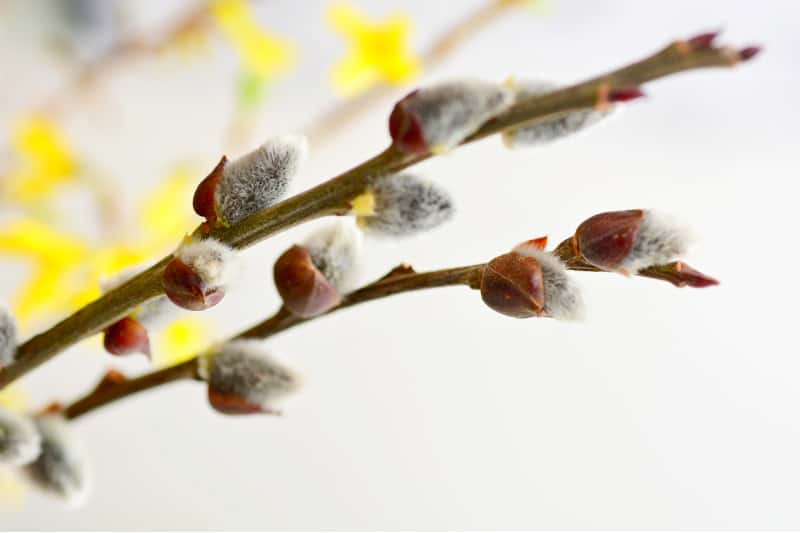
Here’s how you will do it:
- Take a cutting approximately the thickness of a pencil and at least 1 foot long from the new growth, not the older, gray-colored branches, with bypass pruners. For propagation, younger stems with green, supple growth are preferable over older stems.
- Insert the cut (bottom) end of the branch into the ground, leaving a few inches of the branch above the ground and a few nodes (the tiny bumps along the branch) visible.
- Water regularly to keep the soil moist. Roots and new leaves will appear within a few weeks, and growth will be extremely rapid.
Growth Zone
The Black pussy willow can be hardy in the USDA hardiness zone 5 to 8.
Potting and Pruning
A suitable container for a Black pussy plant is a clay pot that drains well but retains enough moisture. It must provide sufficient room for the roots to grow. A plastic container may also be used; just line it with sphagnum peat moss before adding potting soils to avoid root damage.
When pruning, make sure to use sterilized shears and cut the stem just above a node or leaf joint. Prune in late winter or early spring before new growth begins. Pussy willow responds well to hard pruning by removing one-third of the plant’s old stems down to ground level; this should be done every other year in late winter.
In stock In stock In stock In stock
Free Shipping
$20.00
Sold By:
Blessed Family Farm
ASSORTED SUCCULENT ARRANGEMENT
Rated 4.82 out of 5 based on 22 customer ratings01
Sold By:
Blessed Family Farm
$18.00
Sold By:
Smoot's Farm
Peperomia Marble 4 Inch Pot Live Plant
Rated 4.89 out of 5 based on 27 customer ratings00
Sold By:
Smoot's Farm
$9.99
Sold By:
Cacti and Exotica
4″ Kalanchoe synsepala
Only 10 available and it’s in 1 people’s basket Rated 4.98 out of 5 based on 59 customer ratings00
Sold By:
Cacti and Exotica
$17.95
Sold By:
SunSoul Plants
$29.95Hoya Iris Marie plant potted in 4″ pot
Rated 4.87 out of 5 based on 98 customer ratings00
Sold By:
SunSoul Plants
Black Pussy Varieties and Similar Plants
Are there any? Of course! And I assure you that once you get to know them, you’ll definitely want to have them too. A fun fact is that the older specimens do grow into trees, but their branches are weaker and can’t hold much weight.
Here are some of those beauties:
Salix caprea
Small white catkins precede the flowers of Salix caprea, the goat willow. The catkins of the American pussy willow are slightly bigger. Catkins of goat willow mature into larger blossoms with long tendril-like flowers over time.
Because of their pollen, male catkins have a vivid yellow color. Female flowers have a greenish hue to them.
Salix cinerea
Salix cinerea is the largest of the kinds. It can reach heights of up to 49 feet as an elder tree. It has a bushy growth habit, with willow stalks ranging in size from 13 to 18 feet.
Due to pollen dispersion, the male blooms also have a rich golden color. Female catkins are a greenish-grey color. When they reach maturity, they generate seeds carried away by the wind.
Salix discolor
The American pussy willow can be found throughout the northern United States and Canada. It can, however, be grown all throughout the United States. Salix discolor has a crimson bloom that turns into a silvery-white hairy catkin over time.
The catkin will either yellow into a male blossom or remain white and fluffy as a female blossom when it begins to bud.
Black Pussy Diseases & Pests

Pests and diseases are widespread, especially when you first start growing these plants. The most common problem that affects the Black pussy willow plants is the whitefly and lacebugs. They usually invade young shoots and leaves, turning yellowish-brown in color.
Another serious concern for Black pussy willow is root rot caused by soil-based organisms such as Pythium. When you see black spots on the leaves, it is an indication that your salix needs to be treated. The soil should drain quickly and require more frequent watering than typical plants—about once every two days will do just fine!
Watering at night time will help prevent rot from occurring since high humidity is a factor that can lead to disease.
Once you have these problems under control, your Black Pussy willow will be perfectly fine! Just keep the soil well-draining and allow it to dry out before watering again. In addition, make sure there is plenty of air circulation by pruning away any dense foliage from around its base.
Fertilize with a balanced liquid fertilizer every month to give your plant the nutrients it needs to thrive!
Frequently Asked Questions
You should wait 6 weeks after cutting to allow it to dry a little while remaining flexible. However, once the willow has dried out, it becomes brown willow. For example, it will almost certainly require soaking before it is supple enough to use from May onwards.
The best way to preserve Black Pussy willow dead branches is by keeping them in a dry place. Even if you want to use the tree, remember not to water it because this would make its leaves fall off quickly.
When cutting new parts of plants for decoration purposes like the cut flowers, use a sharp knife or scissors. This will prevent many plants from losing any more sap than necessary.
If you have to place the branches in water, make sure that it doesn’t touch the leaves and changes every other day. You could also use floral preservatives to keep them looking good for extended periods.
Bracts will remain on the branches for about two weeks. However, they may last up to four weeks, depending on the weather conditions. Do your best not to handle them roughly because they are sensitive and will fall out easily!
Pussy willows are available in many physical and online garden stores. Here at Plantly, you’ll also find numerous indoor plant species that will suit your taste. We offer faster transactions online, and will he deliver the plant healthy and thriving on your doorstep. Get yours now by messaging us directly!
Whether you want to buy, sell or simply reach out to other plant enthusiasts, Plantly is the right place to be!
In stock In stock In stock
$12.99
Sold By:
Succulent Oasis
Medium Sedum Aurora also known as Jelly Beans
Rated 4.84 out of 5 based on 352 customer ratings00
Sold By:
Succulent Oasis
$4.99
Sold By:
Plants by Stinky Boo
Graptoveria ‘Amethorum’
Rated 5.00 out of 5 based on 2 customer ratings00
Sold By:
Plants by Stinky Boo
$15.00
Sold By:
PotHedz Plants
Alocasia Amazonica
Only 1 available and it’s in 1 people’s basket Rated 4.96 out of 5 based on 106 customer ratings00
Sold By:
PotHedz Plants
